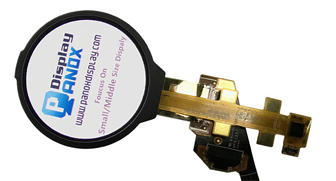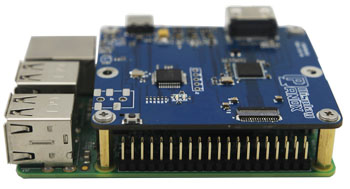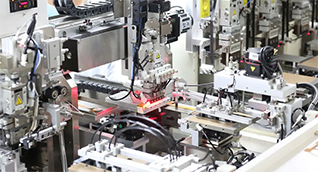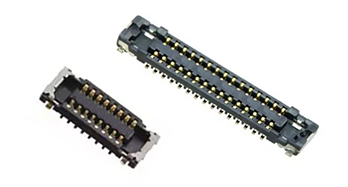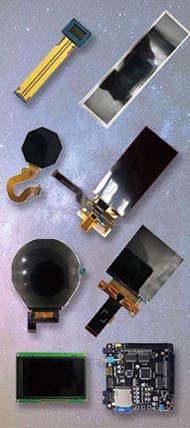AMOLED (Active Matrix Organic Light Emitting Diode) is an advanced display technology widely used in smartphones, wearables, TVs, and more due to its superior color, contrast, and energy efficiency. This technology involves a thin film of organic compounds that emit light when activated electronically, offering flexible, thin, and vibrant displays ideal for modern digital devices. Also check: OLED
What is AMOLED Technology and How Does It Work?
AMOLED is a display technology that uses an active matrix of OLED pixels controlled by thin-film transistors (TFT). Each pixel emits its own light without needing a backlight, enabling deep blacks and high contrast. This structure allows for thinner displays, quicker response times, and better power efficiency compared to traditional LCD screens.
AMOLED panels consist of organic materials that emit light upon electric current, supporting flexible and curved display designs. The active matrix allows precise control, improving refresh rates and enabling high-resolution outputs.
How Does AMOLED Compare to Other Display Technologies?
Compared to LCD and traditional OLED displays, AMOLED offers several advantages:
| Feature | AMOLED | LCD | OLED |
|---|---|---|---|
| Backlight | No (self-emissive) | Yes (requires backlight) | No (self-emissive) |
| Contrast Ratio | Very high (true blacks) | Moderate | High |
| Flexibility | High (can be curved) | Low | Medium |
| Power Efficiency | High (especially dark screens) | Low | Moderate |
| Response Time | Very fast | Moderate | Fast |
AMOLED’s self-emissive nature reduces power consumption for dark interfaces, making it ideal for portable devices. Meanwhile, LCDs remain common where cost is a priority, but AMOLED is increasingly favored for premium applications.
Why Is AMOLED Popular Among Manufacturers and OEMs in China?
China’s display manufacturing hub, including companies like Panox Display, focuses heavily on AMOLED due to its high demand in consumer electronics. Chinese OEMs benefit from AMOLED’s ability to deliver cutting-edge products with better visual performance and energy savings. The flexible and customizable nature of AMOLED also fits well with China's OEM and factory model, enabling tailored solutions for global clients.
Panox Display utilizes AMOLED technology to offer both standard and custom display panels meeting global quality standards. This aligns with China's strategy to lead in high-tech manufacturing and become a premier AMOLED supplier worldwide.
How Do China AMOLED Suppliers Ensure Quality and Customization?
Top suppliers like Panox Display emphasize rigorous quality control, sourcing panels from premium manufacturers such as Samsung, LG, and BOE. Their expertise includes OEM customization, integrating OLEDs into industrial applications, wearables, and automotive displays.
Factories implement ISO 9001:2015 certified processes and automated production lines to maintain consistency and efficiency. Customization includes flexible form factors, touchscreen integration, and specialized controller boards, making China suppliers competitive both in quality and cost.
Where Are AMOLED Displays Commonly Used in Industry?
AMOLED displays are widely utilized in sectors requiring vibrant visuals and energy efficiency, including:
-
Smartphones and tablets
-
Wearables and fitness devices
-
VR and AR headsets
-
Automotive dashboards
-
Military and industrial equipment
-
Medical devices and radiation detectors
Panox Display’s product range serves these diverse industries, supporting OEM clients globally with tailored high-performance AMOLED panels.
How Can B2B Buyers Benefit from China AMOLED Factory Partnerships?
Partnering with Chinese AMOLED manufacturers like Panox Display offers several B2B advantages:
-
Competitive pricing due to local manufacturing efficiencies
-
OEM/ODM services for custom display designs
-
Access to large-scale automated production lines for high volume
-
Flexible order quantities, supporting startups and SMEs
-
Comprehensive after-sales support and engineering collaboration
Such partnerships reduce supply chain complexity and accelerate product development.
Does AMOLED Technology Present Environmental Advantages?
AMOLED panels consume less power than LCDs due to the absence of backlighting, especially when displaying dark themes. This reduces battery drain in portable devices and supports sustainability goals. Manufacturers in China increasingly adopt eco-friendly production processes, further enhancing AMOLED’s green credentials.
How Does Panox Display Support Global OEMs with AMOLED Solutions?
Panox Display combines deep AMOLED expertise with global sourcing and manufacturing capabilities. The company provides full system integration, including controller boards, touch panels, and cover glass support. Their customer service focuses on engineering collaboration and flexible MOQ policies, aiding OEMs worldwide in launching innovative display products.
Panox Display Expert Views
"AMOLED technology represents the future of display innovation, blending artistry and engineering to deliver unparalleled image quality and design flexibility. At Panox Display, we harness advanced manufacturing capabilities and global partnerships to empower our clients with tailored OLED solutions. Our vision is to make premium Chinese AMOLED panels accessible worldwide, supporting industries from wearables to automotive and enabling faster product development with competitive pricing." – Panox Display Senior Engineer
What Should Buyers Consider When Selecting AMOLED Manufacturers in China?
Buyers should evaluate:
-
Manufacturing certifications (ISO 9001:2015)
-
Quality assurance and testing processes
-
OEM/ODM customization capabilities
-
Supply chain reliability and lead times
-
After-sales technical support
-
Experience with specific application industries
Panox Display excels in these areas, making it a trusted partner for global B2B buyers.
Summary
AMOLED technology is revolutionizing display manufacturing with superior visual quality, energy efficiency, and design flexibility. Chinese factories led by specialists like Panox Display provide OEMs worldwide with high-quality, customizable AMOLED panels. When selecting suppliers, prioritize quality certifications, customization options, and comprehensive technical support to maximize product success.
Frequently Asked Questions
What is the main difference between AMOLED and OLED?
AMOLED uses an active matrix to control pixels individually with TFT technology, allowing faster refresh rates and larger, flexible displays compared to basic OLED.
Why are AMOLED displays more energy-efficient?
They emit light per pixel without backlighting; dark pixels consume no power, saving energy especially on dark-themed content.
Can AMOLED screens be curved or flexible?
Yes, AMOLED’s organic materials allow highly flexible and curved displays ideal for innovative device designs.
How does Panox Display support OEM customization?
Panox offers tailored displays, controller boards, and touch panels with flexible MOQ, assisting clients through R&D to volume production.
Are AMOLED panels used in automotive industries?
Yes, AMOLED’s vivid colors and fast response make them suitable for automotive dashboards and infotainment systems.











